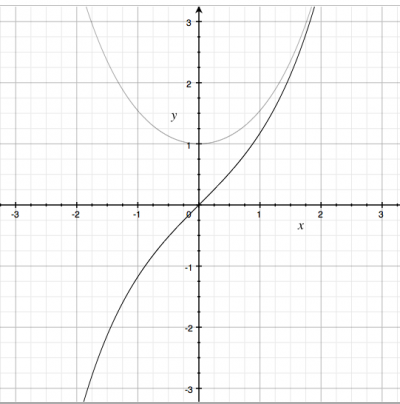The page you are reading is part of a draft (v2.0) of the "No bullshit guide to math and physics."
The text has since gone through many edits and is now available in print and electronic format. The current edition of the book is v4.0, which is a substantial improvement in terms of content and language (I hired a professional editor) from the draft version.
I'm leaving the old wiki content up for the time being, but I highly engourage you to check out the finished book. You can check out an extended preview here (PDF, 106 pages, 5MB).
Hyperbolic cos and sin
If we follow the $x$ and $y$ coordinates of a point $P$ that is on the unit circle, we will see that the $x=\cos(\theta)$ and $y=\sin(\theta)$, where $\theta$ is the angle of the point. This is called circular trigonometry.
We can also have hyperbolic trigonometry, if we replace the circle with a hyperbola. The $x$-coordinate of a point $Q$ that traces out the shape of a hyperbola will have the formula $\cosh$ and its $y$ coordinate will be $\sinh$.
Definition
We can define the hyperbolic functions in terms of the exponential function: \[ \cosh x = \frac{e^{x} + e^{-x}}{2}, \qquad \sinh x = \frac{e^{x} - e^{-x}}{2}. \]
Graph
Parameters
Properties
- $\cosh$ is an even function, while $\sinh$ is odd.
In fact you can think of $\cosh x$ as the “even part of $e^x$,
and $\sinh x$ as the odd part of $e^x$ since \[ e^x = \cosh x + \sinh x. \]
The equivalent of the circular-trigonometric identity $\cos^2 \theta + \sin^2 \theta = 1$, is the following: \[ \cosh^2 x - \sinh^2 x = 1. \]
Applications
A long wire suspended between two lamp posts will sag in the middle producing a curved shape. The exact equation that describes the shape of the cable is the hyperbolic cosine function: $\cosh x$.

